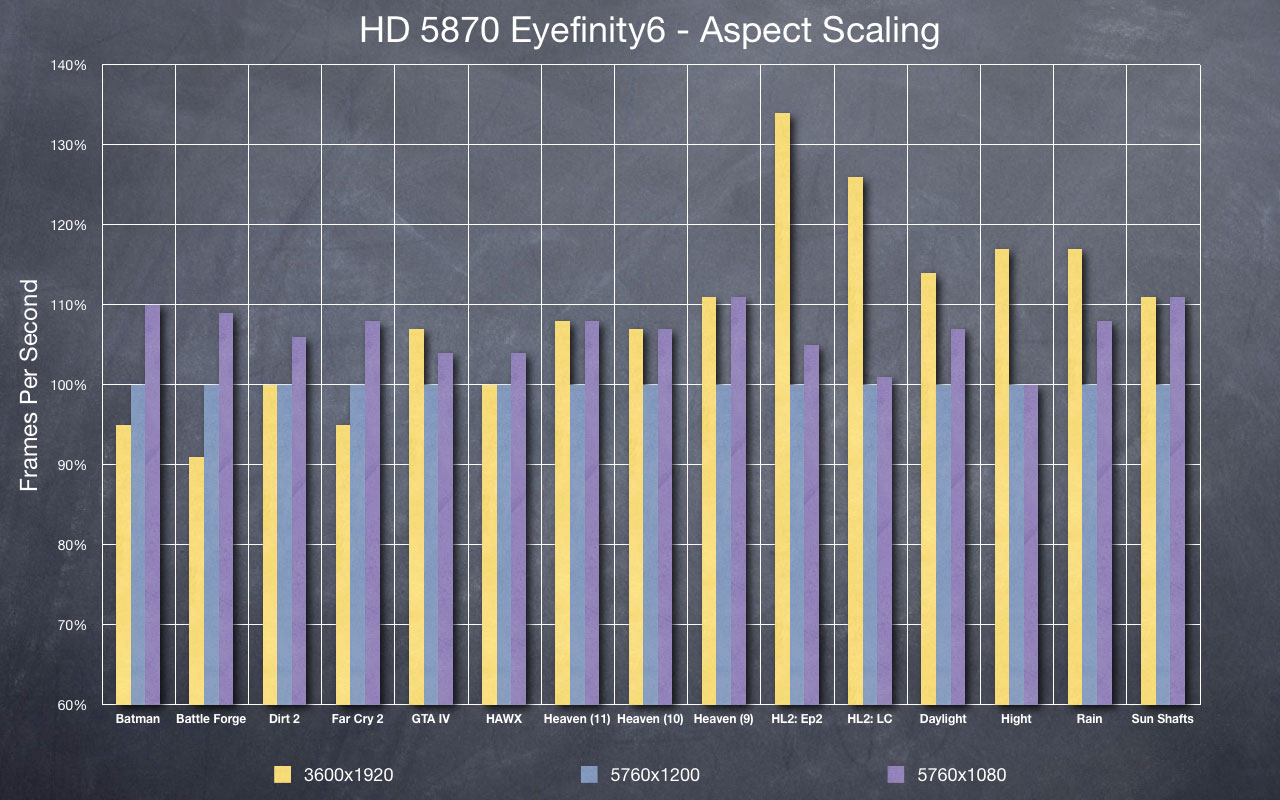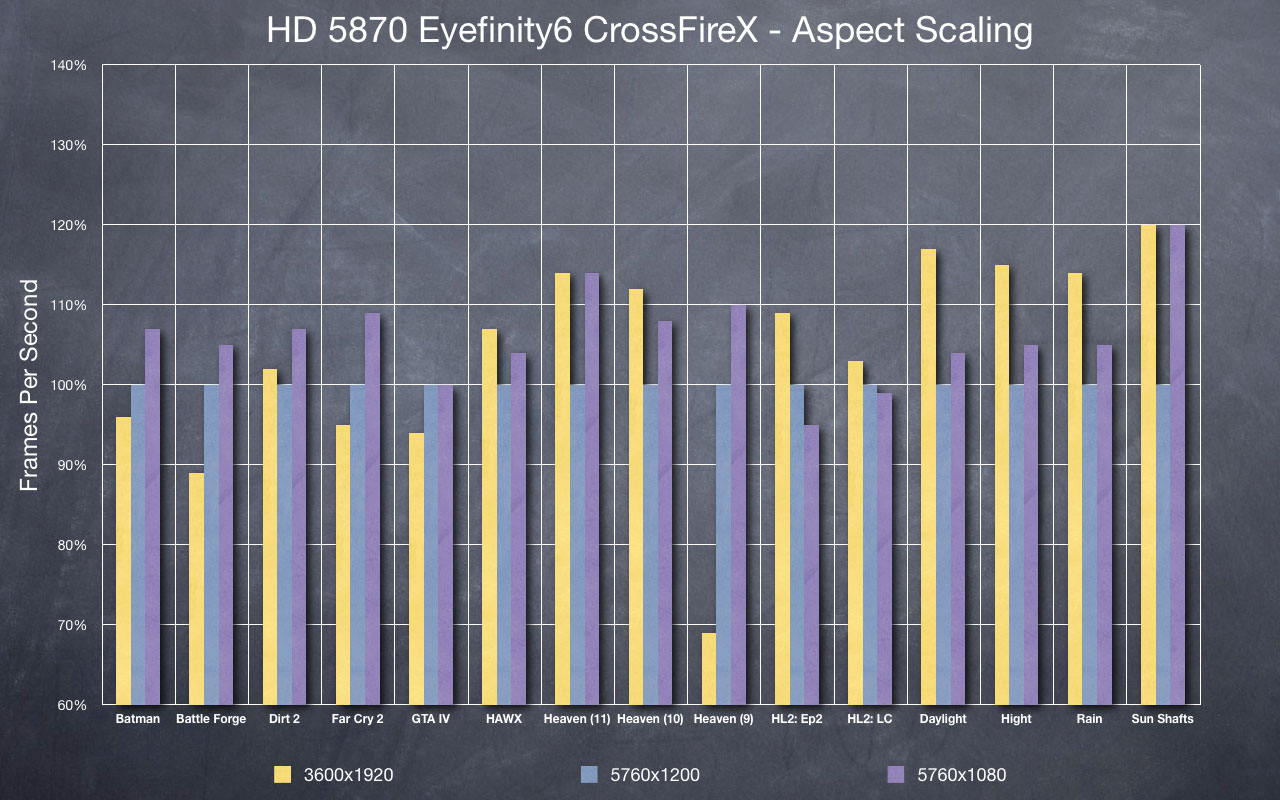ATI Radeon 5870 Eyefinity6 Review - Aspect Ratio Analysis
If you look at some of our early benchmarking, where I tested every step from 1024x768 to 5040x1050, you can see a number of instances where aspect ratio made an impact on performance. In one particular article I looked at how 1280x720 compared to 1920x480. The first is an "HDTV" widescreen that was (and still is) popular on laptops. The second was the lowest possible Surround resolution from the TripleHead2Go - 3x640x480. The interesting thing is that both resolutions have 921,600 pixels - exactly. We did find that moving from widescreen to Surround made a noticeable impact on performance.
Those were the days of DX9 when the biggest impact to performance seemed to be resolution and (based on our finding) aspect ratio. Now we are in a DX10/11 world where SSAO and Tessellation bring their own impacts. Do these impacts overshadow any issues with aspect ratio? Are today's graphics cards so power that aspect ratio is no longer an issue?
I used 3x1920x1200 (16:10 Landscape Eyefinity) as a baseline, and then tested two variations. They are 3x1200x1920 (16:10 Portrait Eyefinity) and 3x1920x1080 (16:9 Landscape Eyefinity). You can see the data below.
In general it ends up being a mixed bag, and largely based on the game. For the most part, the differences are within 10% of the baseline and tend to show improvements in both variations. The first five titles do show a drop in performance in 3x1-P. I have a couple of theories on this:
- Batman - Even though the game is Hor+, the screen caps I took from the demo prove it to be Vert-. So, the 3x1-P is actually showing more than the 3x1-L in 16:9.
- Battle Forge - In this demo, the action is concentrated on the center of the screen(s). The outer edges are the non-descript and non-textured walls of a chasm. There isn't much to tax the system there and it almost appear that those areas help to boost the scores (much like staring at a wall in an FPS helps your fps). When you set the screen to 3x1-P, which is a very large 16:9.5, you end up with the action focused on a super high resolution with very large models and set pieces.
If the game isn't providing a great deal of imagery (and high-impact imagery at that) in the outer screens, then you will probably see a performance drop when moving to a 3x1-P mode.
One thing was confirmed out of this - there is an issue with CFX scaling in Portrait mode in DX9. You will notice how the DX9 Heaven takes a huge hit to performance as CFX is disengaged. Also, we see minimal boots in Half-Life 2 (another DX9 title) with CFX, when compared to the single card performance. This issue is being discussed in the review discussion thread.

